
As you venture into the world of farming, you'll quickly realize the importance of agricultural fencing. This isn't just about setting boundaries or marking your territory. Agricultural fencing plays a crucial role in managing the sustainably of your farm. It is the first line of defense against predators, a deterrent for pests, and a way to ensure your livestock stay within designated areas.
Agricultural fencing can take many forms, each with its own specific uses and advantages. Your choice of fencing will depend on various factors such as the type of animals you're rearing, the size of your farm, the terrain, and your budget. It's an investment that not only protects your farm but also contributes to its success.
Understanding agricultural fencing is key to sustainable farm management. It not only ensures the safety and wellbeing of your animals but also guarantees crop protection thereby enhancing productivity. In this article will guide you through the importance of agricultural fencing, different types available, factors to consider when choosing a suitable one, and its environmental impact.
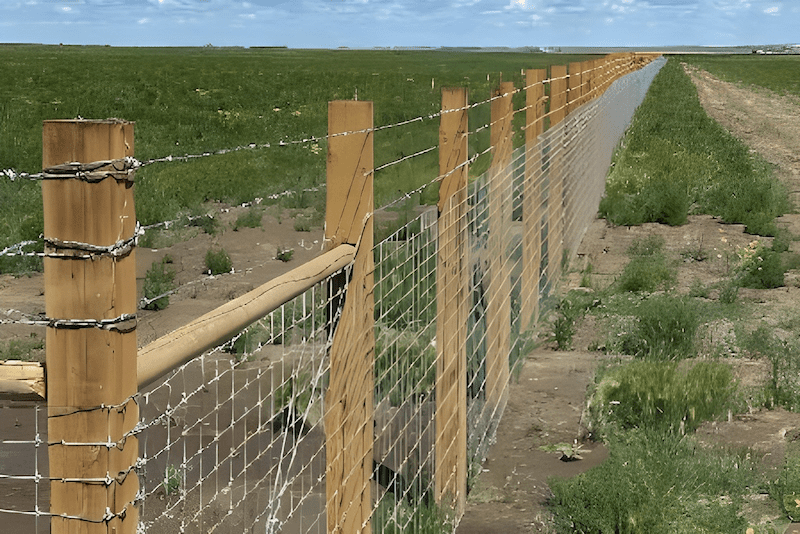
Agricultural fencing is an essential component for sustainable farm management. It is a tool that can drastically improve the productivity and profitability of your farm. With proper agricultural fencing, you can control the movement of your livestock, prevent them from damaging crops, and protect both from predators.
Moreover, agricultural fencing aids in efficient land utilization. With proper fencing, you can allocate specific areas for grazing, growing crops, and buildings. This organization allows for a more streamlined operation, which is crucial for the overall sustainability of your farm.
Barbed Wire Fencing: Barbed wire fencing is a traditional and widely-used type of agricultural fencing. It's made from twisted strands of wire with sharp points or 'barbs' at regular intervals. It's effective in containing cattle and other large livestock but can cause injury if not properly maintained.
Woven Wire Fencing: Woven wire fencing, also known as field fencing, is made by weaving horizontal lines of wire together with vertical wires. This creates a strong and sturdy fence that is excellent for keeping smaller livestock, such as sheep and pigs, within designated areas.
High Tensile Wire Fencing: High tensile wire fencing is a modern, durable, and cost-effective option for agricultural fencing. It's made from steel wire that has been stretched under high tension, making it resistant to livestock pressure and other impacts.
Electric Fencing: Electric fencing is a psychological barrier that uses an electric shock to deter animals from crossing the boundary. It's highly effective for livestock control and can be easily adjusted to suit different animals and situations.
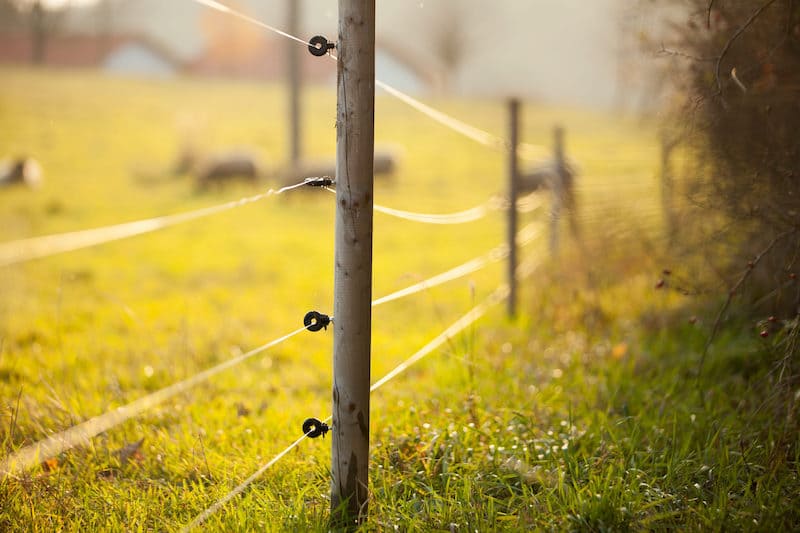
Mesh Wire Fencing: Mesh wire fencing is made of steel wires arranged in a grid pattern. It's highly versatile and can be used for a variety of purposes, from keeping out rabbits and other small pests to containing larger livestock.
Board Fencing: Board fencing is a traditional type of fencing made from wooden boards. It's particularly popular for horse paddocks and other areas where aesthetics is important.
Horse Fencing: Horse fencing is designed with the safety and wellbeing of horses in mind. It's usually made from materials that won't injure the horses if they run into it, such as vinyl or specially designed wire.
Deer Fencing: Deer fencing is designed to keep deer out of certain areas, such as vegetable gardens or orchards. It's typically quite high, as deer can jump extraordinary heights.
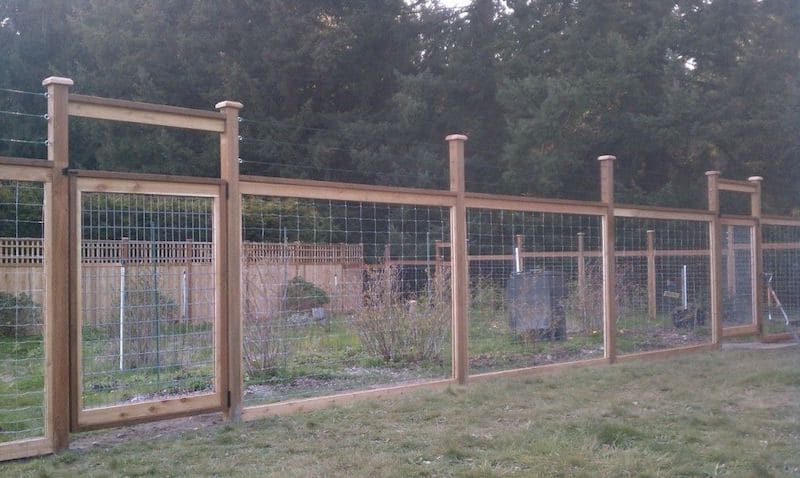
Post and Rail Fencing: Post and rail fencing is a type of board fencing that has been used for centuries. It consists of wooden posts and rails, and it's often used for decorative purposes as well as for livestock containment.
Cattle Panels and Hog Panels: Cattle panels and hog panels are made of heavy-gauge wire and are used for livestock containment. They're particularly popular for use in temporary pens or for creating small paddocks within a larger field.
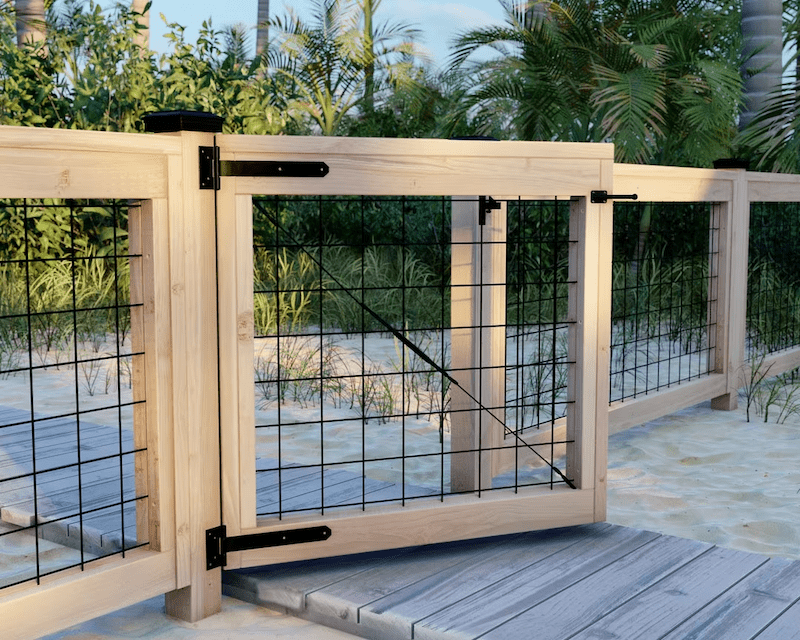
Poultry Netting (Chicken Wire): Poultry netting, also known as chicken wire, is a type of mesh wire fencing that's used to keep poultry in and predators out. It's made from thin, flexible wire that's woven into a hexagonal mesh.
Rabbit Fencing: Rabbit fencing is a type of mesh wire fencing that's designed to keep rabbits out of certain areas. It's usually installed with the bottom edge buried in the ground to prevent rabbits from digging under it.
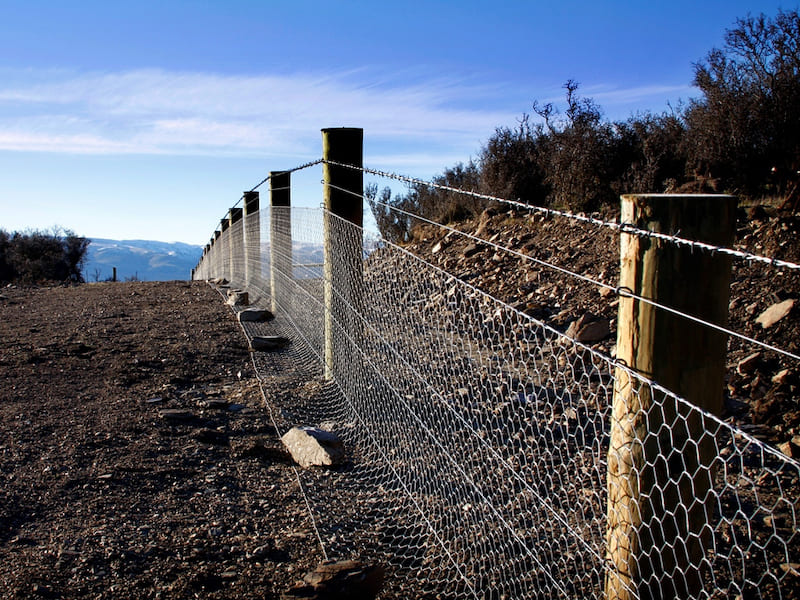
Vinyl Fencing: Vinyl fencing is a modern type of plastic fencing that's becoming increasingly popular for agricultural use. It's durable, easy to maintain, and comes in a variety of styles and colors.
Temporary or Movable Fencing: Temporary or movable fencing is a flexible solution for situations where permanent fencing isn't practical. It's often used for rotational grazing or to create temporary pens for livestock.
Chain Link Fencing: Chain link fencing is a type of woven fencing made from galvanized or coated steel wire. It's sturdy and durable, making it a good choice for areas that need a high level of security.
Biomass Fencing: An alternative to using preservative soaked fence posts is to plant a living tree in its place: it is environmentally sound, costs less money, costs nothing to maintain, creates a windbreak and potential for revenue.
When choosing the right agricultural fencing for your farm, you need to consider several factors. The type of livestock you have, the size of your farm, the local climate, and your budget all play a part in your decision.
Different types of livestock require different types of fencing. For example, cattle can be contained with barbed wire or high tensile wire fencing, while poultry requires smaller mesh fencing like poultry netting. It's also important to consider the behavior of your livestock. Some animals are more likely to challenge a fence, while others are more docile.
The size of your farm also influences your choice of fencing. Larger farms may require more durable and long-lasting fencing like high tensile wire or electric fencing. Smaller farms or homesteads, on the other hand, may do well with simpler options like barbed wire or mesh wire fencing.
Climate is another crucial factor to consider. Some types of fencing, like wood fencing or metal fencing, may not fare well in wet or humid climates. On the other hand, vinyl or electric fencing may be more resistant to weather-related damage.
Finally, your budget is likely to play a significant role in your choice of agricultural fencing. While some options may be cheaper upfront, wood cheaper than plastic for example, they may require more maintenance or replacement in the long run. It's important to consider both the initial cost and the ongoing costs of maintaining your chosen fence.
Installing and maintaining agricultural fencing is a crucial part of sustainable farm management. Proper installation ensures that your fence serves its purpose effectively, while regular maintenance ensures its longevity.
The first step in installing agricultural fencing is planning. You need to determine where the fence will go, what its purpose will be, and what type of fencing is most suitable. Once you've made these decisions, you can start marking out the fence line and gathering your materials.
The installation process will largely depend on the type of fencing you've chosen. However, most types of fencing will require you to install posts at regular intervals along the fence line. These posts will serve as the main support structure for your fence. Once the posts are in place, you can begin attaching the fencing material.
Maintaining your agricultural fencing is just as important as installing it. Regular checks for damage or wear and tear can help you catch and fix any issues before they become major problems. Depending on the type of fencing, maintenance may include tightening loose wires, replacing damaged posts, or repairing broken sections.
While agricultural fencing plays a crucial role in sustainable farm management, it's important to consider its environmental impact. Fencing can affect local wildlife, alter animal behavior, and contribute to habitat fragmentation.
Many types of fencing can pose a barrier to wildlife, preventing them from accessing food, water, or nesting sites. This can lead to decreased biodiversity and disrupt ecosystems. Some types of fencing, like barbed wire or electric fencing, can also cause injury or death to wildlife.
However, there are ways to mitigate these impacts. Choosing wildlife-friendly fencing, maintaining your fences to prevent injury to animals, and incorporating wildlife corridors into your fencing design can all help to lessen the environmental impact of your agricultural fencing.
The cost of agricultural fencing can vary widely depending on the type of fencing, the size of your farm, and the local cost of materials and labor. On average, you can expect to pay between $1 and $3 per linear foot for materials for a basic wire fence. More specialized types of fencing, like electric fencing or vinyl fencing, can cost significantly more.
In addition to the cost of materials, you'll also need to consider the cost of installation. This can also vary widely depending on the complexity of the project and local labor costs. On average, you can expect to pay between $1.50 and $2.50 per linear foot for professional installation.
While the upfront cost of agricultural fencing can be significant, it's important to remember that a well-maintained fence can last for many years. This makes it a worthwhile investment in the long-term sustainability of your farm.
Agricultural fencing plays a crucial role in ensuring the safety of your livestock. It keeps them within designated areas, protects them from predators, and prevents them from wandering onto roads or into other dangerous situations.
Different types of livestock require different types of fencing for optimal safety. For example, horses are prone to running into fences, so they require a type of fencing that won't cause injury if they do. Cattle, on the other hand, are more likely to challenge a fence, so they require a sturdy and secure type of fencing like barbed wire or high tensile wire.
Whether you choose barbed wire, woven wire, high tensile wire, electric fencing, or any other type of agricultural fencing, proper installation and maintenance are crucial for its effectiveness.
Agricultural fencing is an investment in the future of your farm. It's about more than just marking boundaries – it's a tool that can help you manage your farm more sustainably and successfully.